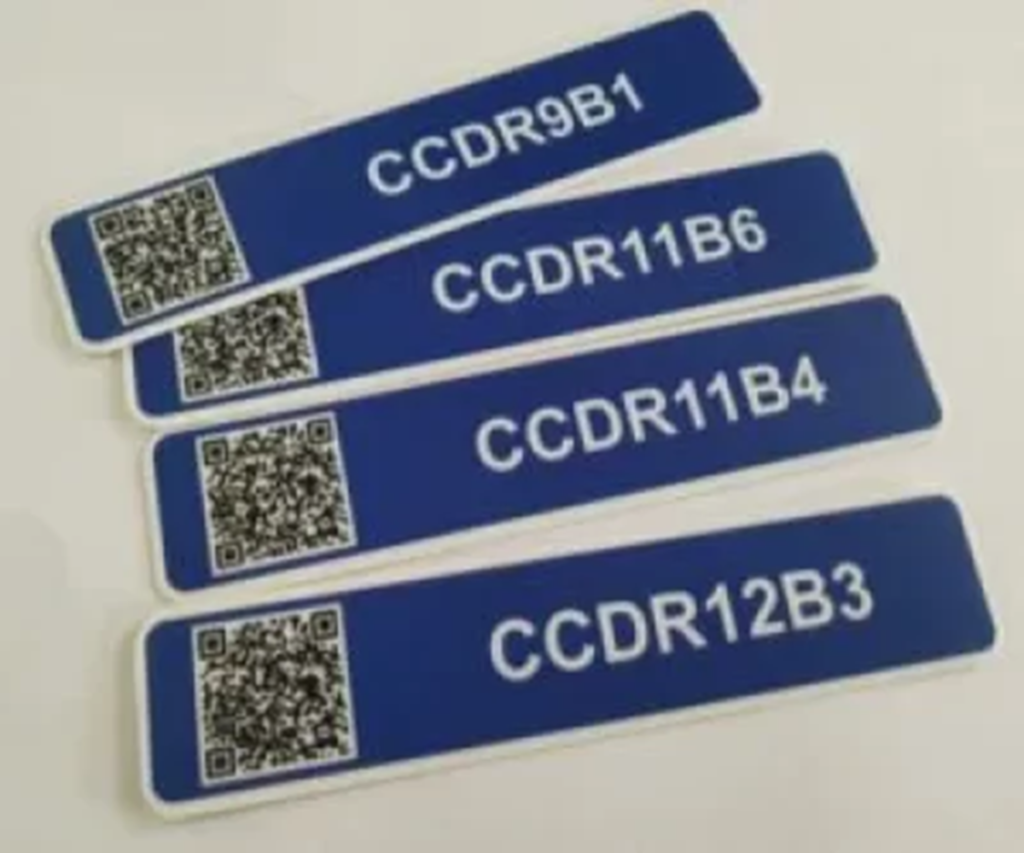Asset Tag Stickers

Asset tag stickers are used for tracking and managing equipment, tools, and other valuable items in businesses, schools, hospitals, and other organizations. They typically include a unique serial number, barcode, or QR code that links to an inventory system.
At Kinelectro lines We manufacture customized Asset tag stickers as per your design and size, with no minimum order quantity, we even print one and ship world-wide
Asset Tag Stickers
Maximizing Efficiency with Asset Tag Stickers, In today’s fast-paced business environment, keeping track of your valuable assets is crucial for smooth operations and financial health. From laptops and tools to furniture and machinery, every item represents an investment that needs to be managed effectively. This is where the often-underestimated power of asset tag stickers comes into play. More than just a simple label, asset tags provide a robust system for tracking, managing, and securing your assets, ultimately saving you time, money, and headaches.
Why Use Asset Tag Stickers?
The benefits of implementing an asset tagging system using stickers are numerous and impact various aspects of your organization:
Improved Asset Tracking: Knowing the location and status of each asset is fundamental to efficient management. Asset tags provide a unique identifier for every item, allowing you to quickly locate and track them throughout their lifecycle. This eliminates the frustration of searching for misplaced equipment or struggling to determine who is responsible for a particular asset.
Reduced Loss and Theft: Clearly marked assets are a deterrent to theft. The presence of an asset tag signals ownership and accountability, making it less likely for items to go missing. In the event of theft, the unique identifier on the tag aids in recovery efforts by providing law enforcement with crucial information.
Streamlined Inventory Management: Regular inventory checks can be time-consuming and labor-intensive. Asset tags simplify this process by allowing for quick and accurate scanning or visual identification of assets. This reduces manual data entry and minimizes errors, leading to more efficient inventory management.
Simplified Maintenance and Repairs: Asset tags can be linked to maintenance records, allowing you to track service history, schedule preventative maintenance, and manage repairs more effectively. This proactive approach helps extend the lifespan of your assets and minimizes downtime due to equipment failure.
Enhanced Accountability: By assigning responsibility for specific assets to individuals or departments, asset tags promote accountability. This helps ensure that equipment is used responsibly and properly maintained.
Accurate Financial Reporting: Asset tags play a vital role in accurate financial reporting by providing reliable data for depreciation calculations, asset valuation, and insurance claims. This ensures compliance with accounting standards and provides a clear picture of your organization’s asset portfolio.
Increased Efficiency: By streamlining various processes related to asset management, asset tag stickers contribute to increased efficiency across the organization. This frees up valuable time and resources that can be better allocated to other critical tasks.
Choosing the Right Asset Tag Stickers:
The effectiveness of your asset tagging system depends on choosing the right type of sticker for your specific needs. Consider the following factors:
Material: Asset tag stickers are available in a variety of materials, including vinyl, polyester, and metal. The choice of material depends on the environment in which the asset will be used. For example, assets exposed to harsh chemicals or extreme temperatures may require more durable materials like metal or specialized polymers.
Adhesive: The adhesive used on asset tag stickers is crucial for ensuring that the tag stays securely attached to the asset. Consider the surface to which the tag will be applied and choose an adhesive that is appropriate for that material. Some adhesives are designed for permanent adhesion, while others are removable.
Printing Technology: Asset tags can be printed using various methods, including thermal transfer, laser printing, and inkjet printing. The choice of printing technology depends on the complexity of the information being printed on the tag and the volume of tags being produced.
Barcode or QR Code: Incorporating barcodes or QR codes into your asset tags allows for quick and accurate data capture using scanners or mobile devices. This further streamlines inventory management and other asset-related processes.
Size and Design: The size and design of your asset tag stickers should be appropriate for the size and shape of the asset being tagged. Consider including your company logo or other identifying information on the tag for added security and branding.
Implementing Your Asset Tagging System:
Implementing an asset tagging system involves several key steps:
Asset Inventory: Conduct a thorough inventory of all your assets and assign a unique identifier to each item.
Tag Selection: Choose the appropriate type of asset tag sticker based on the factors discussed above.
Tag Printing: Print the asset tags with the necessary information, including the unique identifier, barcode or QR code (if applicable), and any other relevant details.
Tag Application: Carefully apply the asset tags to the designated assets, ensuring that they are securely attached.
Database Setup: Create a database to track your assets, linking the unique identifier on the tag to relevant information such as location, department, and maintenance history.
Training: Train your staff on the proper use of the asset tagging system and the importance of maintaining accurate records.
Regular Audits: Conduct regular audits to ensure the accuracy of your asset inventory and to identify any missing or misplaced items.

# 139, KIADB Indl Area, 4th Phase, Bommasandra, Hosur-Jigani Link Road Bangalore, India 560099
Machine & Equipment’s
Pharma/On-site Signage
For Enquires:
- enquiry@kinelectro.com
- +919686466322 +919980454999
